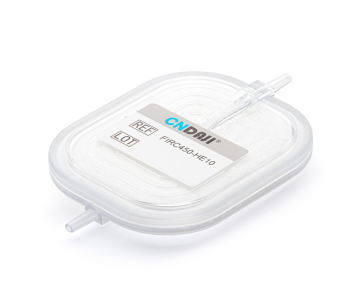Blood centers play a critical role in modern healthcare, ensuring that hospitals and clinics receive safe, reliable, and high-quality blood products. Filtration is one of the most important steps in this supply chain. Through proper filtration, leukocytes, micro-debris, and other impurities are removed, making blood components safer for transfusion. Yet filtration is not a simple process. It involves balancing efficiency, product quality, cost-effectiveness, and regulatory compliance.
The most common challenges blood centers face include maintaining filtration efficiency, managing leukocyte reduction and contamination risks, optimizing filter lifespan and replacement cycles, handling high donation volumes, ensuring regulatory compliance, controlling operational costs, and preparing for future demands. Each of these challenges directly impacts the safety, consistency, and sustainability of blood supply operations.
One of the biggest concerns in blood center filtration is achieving the right balance between removing impurities and preserving blood components. Filters are designed to remove leukocytes and other contaminants, but if the process is too aggressive, it can damage red blood cells or reduce platelet counts. On the other hand, if filtration is too weak, it leaves behind contaminants that increase the risk of transfusion-related complications such as immune reactions.
A real-world example comes from large European blood centers that reported variability in platelet recovery rates when relying solely on manual processing. After adopting automated, validated filtration devices, these centers achieved greater consistency across batches, reducing product loss and ensuring safer transfusion outcomes.
Leukocyte reduction is vital for reducing febrile reactions, alloimmunization, and the transmission of certain pathogens. However, not all filters are equally effective, and donor-related factors can also influence outcomes. For instance, blood collected from donors with higher baseline leukocyte counts requires filters with stronger performance consistency.
Leading blood centers have turned to advanced leukoreduction filters combined with automated handling systems. Automation reduces manual variability, minimizes operator error, and guarantees consistent leukocyte removal. In addition, centers that integrate real-time monitoring can measure leukocyte counts after each process step, ensuring full compliance with regulatory thresholds.

Filters have a limited lifespan, and their performance declines if used beyond optimal limits. Conversely, premature replacement leads to higher consumable costs. The challenge lies in identifying the precise point at which efficiency drops without wasting usable capacity.
Progressive blood centers now use predictive maintenance methods. By tracking parameters such as flow rate and pressure drops across multiple cycles, they are able to determine the most cost-effective replacement intervals. This approach not only ensures that filtration efficiency is maintained but also reduces operational waste, saving thousands of dollars annually in large-scale operations.
The demand for blood is increasing, particularly in urban areas with high healthcare demands. A single regional blood center may process over 1,000 donations per day. At such volumes, even small inefficiencies can lead to significant bottlenecks.
Automated filtration lines equipped with robotic loading and unloading systems have proven effective in addressing these challenges. By reducing manual handling, these systems improve throughput, reduce labor dependency, and maintain consistent quality. Some Asian blood centers that introduced robotics reported a 20% increase in daily processing capacity without hiring additional staff, highlighting the potential of automation to transform operations.
Blood centers must comply with stringent regulations from organizations such as the FDA in the United States, the AABB in North America, and equivalent authorities worldwide. Compliance requires not only meeting technical standards for filtration but also documenting every process step for traceability.
Blood Bank Management Systems (BBMS) have emerged as essential tools in this context. By automatically logging filtration parameters, donor batch details, and quality control results, BBMS reduces paperwork and ensures traceability. This integration also helps blood centers prepare for audits efficiently and maintain the highest safety standards.
Operating a blood center involves high recurring costs, including consumables, labor, equipment maintenance, and regulatory compliance. At the same time, blood centers cannot compromise on quality, as patient safety is paramount.
The solution lies in adopting durable, reliable filtration systems and pairing them with cost-optimization strategies. Predictive maintenance reduces downtime, while automation minimizes labor dependency. Long-term data analysis also helps centers identify inefficiencies and improve resource allocation. Some institutions report cost reductions of 10–15% annually after switching to automated and data-driven systems.
The future of blood filtration lies in technological innovation and sustainability. Automated filtration systems, powered by robotics and AI-driven platforms, are expected to become the norm, minimizing human intervention and improving consistency.
Next-generation filter materials made from high-performance polymers promise better leukocyte removal with minimal damage to blood components. Data-driven management, enabled by integrating filtration systems with digital platforms, allows for predictive maintenance, process optimization, and long-term planning.
Sustainability is also a growing focus. Eco-friendly and reusable filters are being developed to reduce biomedical waste and operating costs, aligning with global healthcare sustainability initiatives. These trends are already reshaping the competitive landscape, with forward-looking blood centers adopting new technologies to remain ahead.
Blood filtration is at the heart of every blood center’s mission to deliver safe, reliable products to patients. The challenges are significant: ensuring efficiency without sacrificing quality, removing leukocytes consistently, optimizing filter lifespans, handling high volumes of donations, maintaining regulatory compliance, and controlling costs. However, with advanced technologies, automation, and data-driven systems, these challenges can be effectively addressed.
DaJiMed stands at the forefront of this transformation, providing cutting-edge solutions that empower blood centers to achieve operational excellence. From high-efficiency filtration systems to intelligent process management, DaJiMed helps institutions worldwide ensure safer blood supplies, lower operational costs, and improved outcomes for patients.
.
Copyright © Guangzhou DaJi Medical Science and Technology Co., Ltd. All Rights Reserved Sitemap | Powered by 